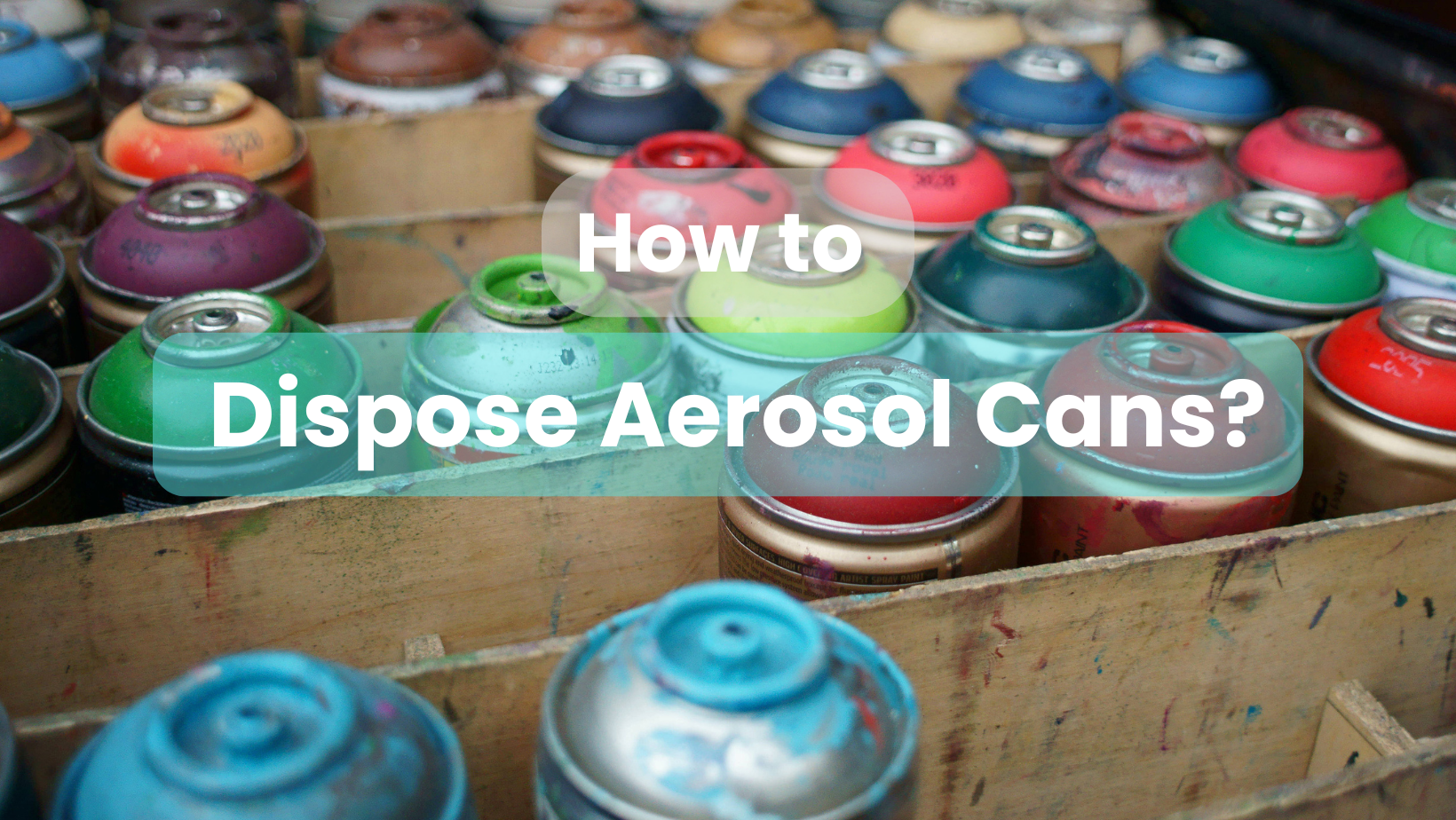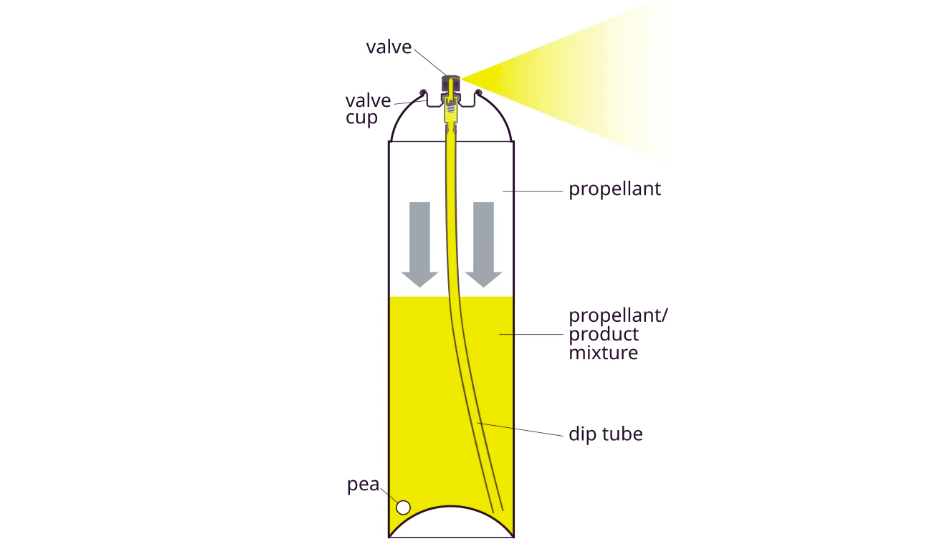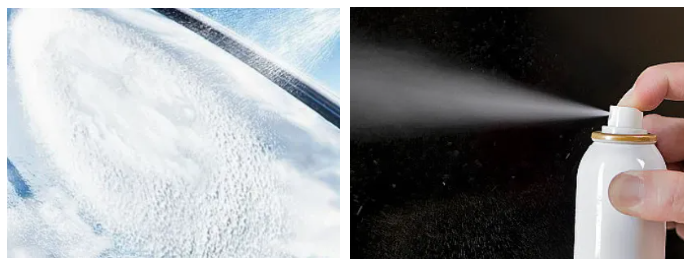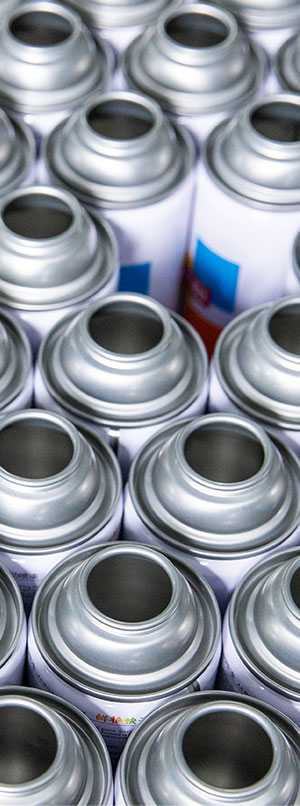Aerosol products like spray cosmetics (e.g., hairspray, deodorants), industrial aerosols (e.g., rust removers, mold release agents), household cleaners (e.g., air fresheners), and spray paints are widely used in many areas of daily life.
After these products are used up, how should we safely and responsibly dispose of these aerosol paint spray cans? Should they be thrown into the regular trash, recycled directly, or do they require special handling?

The Structure of an Aerosol
An aerosol is a common portable spray product, also known as a spray paint, self-spray paint, or manual spray paint.
It is mainly composed of an aerosol can, the contents (e.g., paint, deodorant, or insecticide), a spray nozzle for the aerosol can (spray valve), and a propellant.
The principle is to use high pressure to fill the can with the contents after special treatment. When the spray head is pressed, the contents are sprayed out easily and evenly.

Further Reading: Is Aerosol Bad for You?
Q: Can Aerosol Cans be Recycled?

Common spray paint car aerosol cans, lacquer aerosol spray cans, and other spray paint aerosol cans are typically made of aluminum or steel, which are high-value metals that can be recycled infinitely.
However, because they are pressurized and often contain flammable or hazardous residues, you must comply with local recycling safety guidelines and follow specific steps to ensure safety and environmental protection.
Always check the specific recycling guidelines issued by your city or community’s waste management department.
Among these steps, determining whether the aerosol can is completely empty is the decisive key to safe handling and recycling.
Please continue to the next section for further detailed explanation.
Q: How to Dispose of Aerosol Cans?

(1) Key Principle: Is the Aerosol Can Completely Empty?
The most critical factor in deciding if an aerosol can can be disposed of in the curbside recycling bin is whether it is completely empty.
— Completely Empty: In most areas, an aerosol can is considered safe to place with other metal recyclables only after both the product and the propellant (gas) have been completely discharged. If you shake the can and hear no liquid sloshing, or press the nozzle and hear only a weak hiss or nothing at all, it can be considered empty.
— What Not to Do: Do NOT puncture, crush, or disassemble the aerosol can. Remove any plastic caps and dispose of them separately according to your local plastic recycling rules.
(2) Full or Partially Full Aerosol Cans
If the aerosol cans still have product residue (even a tiny amount) or residual pressure/gas, do NOT throw them into the regular trash or curbside recycling bin. A pressurized can can explode or catch fire during trash compression or at a recycling facility.
— Handling Method: Unemptied aerosol cans must be managed as Household Hazardous Waste (HHW).
— Drop-off Location: You will need to take them to a designated hazardous waste collection site or a collection event organized by your local government or community.
(3) Special Contents (e.g., Paint)
Even if a can is empty, the contents may affect how it is recycled:
— Hazardous Chemicals: Aerosol cans that held paint, solvents, or pesticides, even if empty, are usually still considered hazardous waste and should be taken to a hazardous waste collection point.
— Non-Hazardous Items: Empty cans that contained non-hazardous items such as hairspray, cooking spray, shaving cream, or whipped cream can usually be placed directly in the curbside recycling bin.
Here are links to regulations from some countries and states regarding “how to dispose of aerosol cans”, provided for your quick reference:
US EPA Universal Waste Rule: Adding Aerosol Cans
https://www.epa.gov/hw/increasing-recycling-adding-aerosol-cans-universal-waste-regulations
US Code of Federal Regulations CFR 40 Part 273 – Standards for Universal Waste Management
https://www.ecfr.gov/current/title-40/chapter-I/subchapter-I/part-273
California Health and Safety Code Section 25201.16
https://www.cdtfa.ca.gov/lawguides/vol4/hwf/hwf-25201-16.html
EU Comprehensive Guide on Waste Shipments and Recycling
https://environment.ec.europa.eu/topics/waste-and-recycling/waste-shipments_en
UK Government Guidance for Storage and Treatment of Aerosol Cans
https://assets.publishing.service.gov.uk/media/5a74b898e5274a3f93b48440/geho1111bved-e-e.pdf
Canada Guide to Hazardous Waste and Hazardous Recyclable Materials Classification
https://www.canada.ca/en/environment-climate-change/services/managing-reducing-waste/cross-border-regulations/guide-hazardous-waste-material-classification.html
China Regulations on the Safe Management of Hazardous Chemicals (Latest 2011 Revision)
https://www.cirs-reach.com/China_Chemical_Regulation/Regulations_on_safe_management_on_hazardous_chemicals_China_2011.pdf
Japan Container and Package Recycling Law (JCPRA) – Aerosol Can Reuse and Recycling Guidelines
https://www.jcpra.or.jp/Portals/0/resource/eng/JCPRAdocuments202012.pdf
SANVO’s Aerosol Sustainability Solutions
Correct recycling and disposal of aerosol cans aren’t just an environmental duty for every consumer and business; they are a crucial step in advancing the circular economy.
SANVO understands this deeply. We continuously integrate sustainability principles into our product design and manufacturing processes. Every type of aerosol, adhesive, and waterproofing film we supply is made using non-toxic, eco-friendly materials. Furthermore, we consistently invest resources into environmental protection initiatives, ensuring our products meet high environmental standards from production to disposal.
